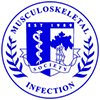Authors: Chen S, Wongworawat MD, Anderson M, Cheng WK
Title: Diabetes is Associated with Increased Surgical Site Infections in Spinal Arthrodesis
Institution: Loma Linda University, Loma Linda, CA
Purpose: Surgical site infections (SSI) are one of the most common post-operative complications in the United States. For orthopedic procedures, spinal surgeries have an increased incidence of SSI with reported rates up to 15%. Multiple risk factors for SSI.
Methods: A retrospective cohort study at a single university hospital was performed. After approval from our institutional review board, patients were enrolled who underwent an elective lumbar arthrodesis by a single surgeon from January 1, 2003 until March 31, 2008. Eligible patients were between 18 and 90 years of age and received cefazolin for prophylaxis. Patients were excluded from the study if they had a history of previous spinal surgery or spinal infection. The diagnosis of infection was determined using the CDC definition of SSI. The medical records of the patients enrolled were then reviewed. The data was collected from the medical record using a standardized data collection form, which included the demographic data, American Society of Anesthesiololgists (ASA) class, antibiotic dose, redose if given, estimated blood loss, and drain use. These potential risk factors for SSI were derived after a thorough review of the literature. Patients were divided into two cohorts, diabetic and non-diabetic. The development of SSI was documented in these two patient groups. The relative risk was calculated. Multivariate analysis was performed to factor in confounding variables, and the adjusted relative risk with 95% confidence intervals was calculated.
Results: Two-hundred and forty-four patients were enrolled in the study. Of these, 33 patients were excluded due to subsequent loss to follow-up (13%), leaving 211 cases. After multivariate analysis with the factoring in of confounding variables, the adjusted relative risk of having diabetes was 3.16 with a 95% confidence interval of 1.23 to 8.13. Additionally, other risk factors were evaluated in a case-controlled multivariate model. Age, gender, tobacco use, body mass index, American Society of Anesthesiologists (ASA) class, intraoperative antibiotic redosing, prolonged surgery time, bone allograft use, estimated blood loss (EBL), and drain use did not appear as significant risk factors for SSI (p > 0.05).
Discussion and Conclusion: Diabetes is a significant risk factor forsurgical site infections in spinal arthrodesis surgery. The results of our study and a review of the literature suggest that perioperative glycemic control should be optimized.

